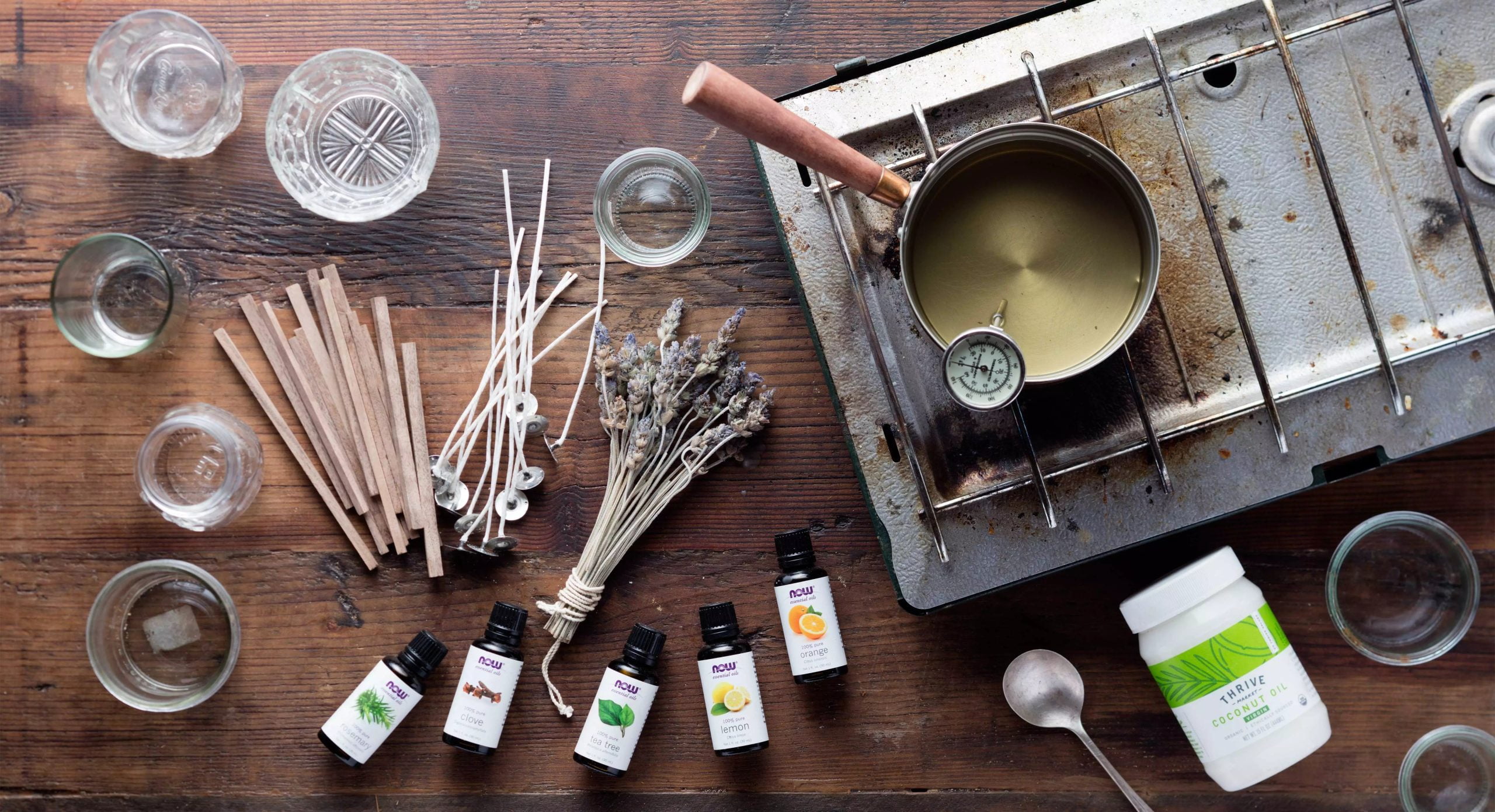Introduction to the Candle Making Industry Report
The Candle Making Industry Report provides an in-depth analysis of the industry as a whole, including market sizing and growth forecasts. It also drills down into specific segments and key areas such as materials used, product types, distribution channels, and marketing & promotion strategies. Major players in the industry are identified along with detailed analysis of their companies and products. Additionally, relevant trends, drivers, and challenges are discussed which offer insight on what to look for in the future of this industry. Furthermore, technological advancements driving the industry’s evolution are presented with noteworthy disruptions likely to take place in the near future. Lastly, financial resources from leading countries playing major roles in this sector are listed while implications of current political contexts that may influence the industry’s health are addressed explicitly. All added together, this report paints a holistic picture of candle making market opportunity today and provides a well-rounded view into its future potential.
The Rise in Popularity of Candle Making
The candle making industry has experienced a monumental surge in popularity over the past few years, with more people than ever taking interest in creating their own homemade candles. Advances in candle-making technology have made it possible to produce high-quality candles using natural, renewable resources. Consumers are drawn to the eco-friendly production process and are now opting for candles produced by independent makers over mass-produced commercial brands.
Various factors are driving the growth of this art form. With more celebrities endorsing DIY crafting, members of the public are becoming more attracted to trying their hands at home decorating and creative activities such as candle making. Additionally, the materials needed to make quality handmade candles are readily available online and at most major retailers nationwide. Upcycling or repurposing items like mason jars and other containers into candle holders is adding to the renewed desire for customizing one’s home décor with handcrafted items. Furthermore, many consumers view handmade candles as a special treat for themselves and as thoughtful gifts for friends and loved ones.
The increasing popularity of painted, scented, and multi-wick varieties of candles has further contributed to the growth of this industry. Creative packaging solutions have allowed independent makers to distinguish their products from mass-produced brands on store shelves and draw customers in with show-stopping displays featuring visually appealing creations and unique fragrances. As an increasing number of shoppers become conscious about sustainability issues, they are turning toward these homegrown businesses who offer environmentally friendly solutions that align with higher standards of quality than most conventional products can provide.
Overview of the Global Candle Making Industry
The global candle making industry is an ever-growing market, with many different players contributing to the overall success of the industry. According to a report by Grand View Research, the global candle market size was valued at 4.69 billion USD in 2020 and is expected to grow at a CAGR (Compound Annual Growth Rate) of 6.3% from 2021 to 2028. This indicates that the industry shows no sign of slowing down any time soon, signaling sustained growth and potential for future growth.
The primary markets for candles and related products consist of fragrance makers and retailers, followed by religious organizations, home décor stores, gift and novelty vendors. Businesses use candles in various ways: as a source of decoration and ambiance; as scented items for aromatherapy; or to help people focus when praying or meditating. The main strategy practiced across all industries for candle sales is product differentiation via design, color, scent, shape or size”which leads to higher profit margins due to customization value-adds.
In terms of manufacturing materials used within this industry, beeswax is currently dominating the material composition landscape due to its natural properties like sustainably sourced ingredients as well as environmental friendliness when compared to other materials such as paraffin wax or synthetic fragrances. In terms of technology advancements aiding production efficiency levels, robotics plays a huge role in helping manufacturers streamline their operations while providing better organic quality assurance standards due to its human error eliminating capabilities. On top of this add the advantages provided by AI (Artificial Intelligence) systems that make it easier for companies to glean insights into their internal processes across wider audiences without risking any marginal loss due to cost cutting options ” which also can be extended beyond candle production areas such as logistics management or marketing campaigns implementations that are centered on candle category sales increases purposes exclusively through tailored emails cepersonalizing further relationships with target consumers directly online channels
Latest Innovations in Candle Making
The latest innovations in the candle making industry are all about convenience, safety, and sustainability. Candles are now being made with pre-measured and pre-wicked beeswax which makes it much easier for crafters to make high-quality candles with even burn rates. Additionally, flame retardant materials are being used in candle wax recipes to ensure that candles remain safe to use while burning. Finally, more sustainable materials are being used to make wicks, such as cotton or bamboo string, which eliminate the need for unhealthy metals or plastic materials. Candle enthusiasts have embraced these new developments and have embraced a new level of luxury within the candle making process.
Sustainability Considerations in Candle Making
The candle making industry has grown significantly in recent years. As a result, questions about sustainability and environmental impact have come to the forefront. Companies must consider the production processes they use, the materials they use and the type of wax they source when they develop their sustainability policies.
When it comes to production processes, companies should strive to reduce waste and emissions as much as possible. This could include investing in energy efficient equipment and taking steps such as using reusable molds instead of disposable ones. Additionally, some companies are turning to alternative power sources such as solar or wind energy to reduce reliance on fossil fuels.
Companies should also think carefully about the materials used for candle-making when considering sustainability. For example, paraffin wax is a commonly used wax that can be derived from both animal fats or petroleum-based products; instead companies may opt for eco-friendly alternatives such as soy wax or beeswax which are made from plant-derived products. Furthermore, cotton wicks tend to be vastly preferred over metal wicks due not just to their biodegradability but also because metal can give off fumes when combined with certain types of wax such as paraffin. Natural scents should also be sought out when developing candles; synthesized fragrances have the potential to contain toxic compounds while essential oils are environmentally friendly and provide aromatherapy benefits beyond those offered by synthetic substitutes.
Finally, responsible sourcing is paramount in creating an eco-friendly product line. Reliable suppliers should be found and checked regularly since many mass produced candles contain synthetic additives and dyes that can damage air quality if not burned correctly or disposed of appropriately (which most people do not). Companies must ensure that the raw materials used in their candles are non-toxic, ethically sourced, sustainable and traceable whenever possible – this will help them meet current consumer demand for safer products without compromising quality or integrity of their product lines moving forward.
Major Market Players and Their Profiles
One of the major players in the candle making industry is Yankee Candle. Founded in 1969, Yankee Candle specializes in high quality scented candles. It offers a variety of products including jar candles, tumbler candles, samplers and votives made from paraffin wax. Its products are available in retail stores as well as through its online store. Yankee Candle also offers accessories to accompany their products such as holders, trays and refill oils.
Another major player in the industry is IllumiScents Candles. Established in 2004, IllumiScents manufactures candle-making supplies such as waxes, gel bases, containers, wicks, dyes and fragrances. They offer a range of products suitable for all budgets and requirements with competitive pricing and excellent customer service. Their website also offers instructions on how to make your own candles using their supplies as well as safety information on handling hot wax. Their product line also includes gel melts which can be used in tart warmers providing long lasting fragrances without an open flame.
Additionally, WoodWick Candles is another leading player in this market with over 30 years experience crafting candles that lend a heartwarming ambiance anywhere they’re used. Some of their unique offerings include crackling wicks and differential scents creating aroma experiences unprecedented by other candle manufacturing companies. Furthermore, WoodWick produces a wide selection of shapely jars with wooden lids and multi-sizes to fit customers needs – ranging from three to twenty one ounce jars filled with up to twenty two different scented solutions like lemon custard or even Christmas morning captivating your senses from start to finish!
An Analysis of the Economics Behind Candle Making
The candle making industry is a growing and profitable endeavor. Over the last decade, candles have gained impressive popularity for their decorative, aromatherapeutic, and spiritual effects. Though often associated with scented varieties, many unscented offerings are available for both personal and professional use.
As an economic activity, the production of candles is largely dominated by privately owned businesses. These companies can vary in size from small operations to significant plants that produce candles in large volumes. Manufacturing locations may be located locally or offshore depending upon cost factors.
The materials used to make candles are relatively inexpensive and include waxes such as paraffin, soybean, and palm oil-based waxes; wicks; dyes; fragrance oils; containers for pouring candles into; molds for forming candles in various shapes; packaging material for labeling finished products; marketing costs; shipping costs; cost of labor involved in producing and packing each item prior to sale among other expenses needed for the success of any candle making business venture.
In terms of market opportunities, sales are mainly driven by seasonal demand from regular consumers as well as opportunity buying from gift buyers especially during special occasions like Christmas and other festivals where customers prefer to buy gifts in specialized packaging that features an aesthetically pleasing design or even customized labels printed with specified motifs or greetings messages that make giving as well as receiving even sweeter. Secondly, there’s also a decent market potential in the field of luxury candle businesses which primarily cater to corporate gifting requirements with unique looking high-end packages that feature top-notch ingredients like essential oils formulated with diverse aroma profiles carefully blended together by professional perfumers. Further expanding this horizon further includes product development through research & development of new scents and fragrances based on customer word-of-mouth feedback at different levels ranging across distinct pop cultural references & interpersonal connection which directly influence product satisfaction when buying off brands that offer more than just plain colored monotonous smelling items but instead offer high value experience every single time someone lights up anything from its inventory!
Challenges Facing the Candle Making Industry
The candle making industry faces a variety of challenges. One of the most prominent is competition from other fragranced home products, such as wax melts, plug-in warmers, and reed diffusers. With so many different products on the market, it can be difficult for candle businesses to stand out and generate significant sales. Additionally, traditional paraffin wax candles have come under scrutiny for producing potentially harmful chemicals when burned. As a result, companies must find ways to make their products safe and competitive in order to continue operating profitably in an increasingly crowded sector.
Furthermore, consumers are becoming increasingly conscious of the environmental impact produced by the manufacturing of candles. As buyers become more aware of their individual responsibility to protect the planet, eco-friendly alternatives such as soy wax candles are gaining greater popularity as people prefer chemical-free options with low carbon footprints. This places candle businesses in a position where they must reduce waste and obtain sustainable ingredients if they want to keep up with changing trends in customer preferences. Lastly, while digital channels offer a number of marketing opportunities for businesses in this industry, the cost associated with maintaining an online presence and generating organic growth through content production can be overwhelming for small enterprises who lack financial resources or technical expertise.
Unique Market Opportunities in Candle Making
The candle making industry is one that can offer unique market opportunities for aspiring entrepreneurs. The industry is a relatively small one compared to others, with an estimated total of 500,000 small businesses operating in the United States and generating revenues of around $2 billion yearly. However, the current popularity of candles as home décor accessories and as gifts has been increasing steadily, creating an opportunity for innovative entrepreneurs to capitalize on this trend. Candles are often seen as affordable gifts that evoke a sense of intimacy or relaxation, making them particularly suitable for special occasions such as weddings, Christmas and birthdays. Additionally, with the move away from traditional scented candles most consumers now find it increasingly easier to create stylish pieces that fit seamlessly into their own unique home décor style.
By taking advantage of these unique market opportunities offered by the expanding candle making industry, entrepreneurs can look to capitalise on current trends in both online retailing as well as craft fairs/showcases which have become popular over recent years. For those looking to reach out directly to consumers beyond the family circle, social media platforms such was Instagram offer a great platform through which candles can be showcased and virtual shops established. Furthermore, production expenses tend to remain low given that startup costs associated with producing candles remains largely much more affordable than other business start-ups due to minimal overhead expenses such as rent and electricity bills which remain largely unchanged over time. Therefore entrepreneurs are able to generate attractive profit margins especially through direct marketing efforts utilizing concise product descriptions via digital sites and conducting virtual sales either via pre or post order request mechanisms which often leads not just to further sales profits but also drives customer loyalty and enhances trustworthiness among new customers thereby potentially leading up towards long term sustainability of businesses set up in the highly competitive Candle Making Industry.
Conclusion and Summary of Candle Making Industry Report
The candle making industry continues to grow, albeit slowly. Over the past five years, sales volume has constantly increased and exports have continued a modest but steady increase. However, while the industry’s outlook is positive, majority of production and sale of candles are concentrated in only few countries. Furthermore, as consumer preferences shift and demand for organic candles grows, manufacturers need to keep up with shifts in tastes.
In conclusion, it can be seen that the candle-making industry is stable and growing steadily. Though it faces competition from within the industry as well as with other types of lighting products like LED lights, the increasing popularity of scented candles offers good growth potential for manufacturers. To take full advantage of this potential going forward, manufacturers should pay more attention to trends in consumer preferences and make sure their product lines meet those needs. They should also focus on developing better production standards to ensure product quality and safety. Finally, they should continue to tap into export markets to diversify their business operations and expand their reach globally.

Welcome to my candle making blog! In this blog, I will be sharing my tips and tricks for making candles. I will also be sharing some of my favorite recipes.





